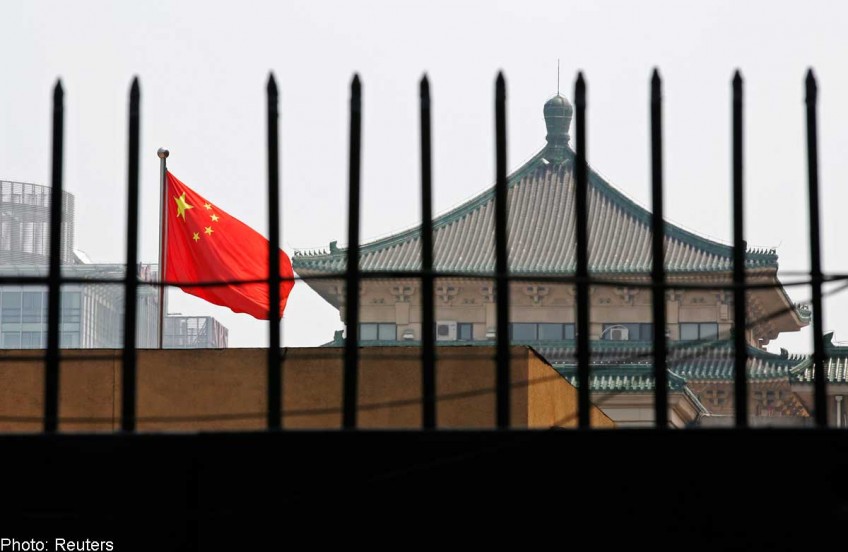China data hits multi-year lows, boosting stimulus hopes

BEIJING - China showed fresh signs of slowing growth in the first two months of the year on Wedneday, with industrial and retail data hitting multi-year lows, boosting expectations for fresh government support for the world's second-largest economy.
Industrial output, which measures production at China's factories, workshops and mines, rose 6.8 per cent year-on-year in January and February, the National Bureau of Statistics (NBS) said.
That was the lowest for six years, since a reading of 5.7 per cent in December 2008, and fell short of a median forecast for growth of 7.7 per cent in a survey of economists by Bloomberg News.
Retail sales, a key indicator of consumer spending, gained 10.7 per cent during the first two months from the year before, the NBS said, the worst since 9.4 per cent in February 2006.
And fixed asset investment, a measure of government spending on infrastructure, expanded 13.9 per cent during the period, the NBS added - the lowest for 13 years, since 13.7 per cent for the whole of 2001.
The data are the latest snapshot of the health of the Asian colossus, a major driver of the global economy which is in a delicate transition phase away from decades of double-digit annual growth to a new, slower model that authorities say is more sustainable.
"Overall, core activity data confirm weakening growth momentum," Nomura economists wrote in an analysis of the data.
"The current downtrend is a structural issue involving the correction of the property market and overcapacity in manufacturing sectors," they added.
"To offset the headwinds to economic growth, we now expect monetary policy to be loosened even further." The NBS released statistics covering two months to ease out distortions due to China's Lunar New year holiday last month.
'Downside risk'
China's gross domestic product (GDP) expanded 7.4 per cent last year, the worst result since 1990, and last week leaders lowered the country's 2015 GDP growth target to "approximately seven per cent," from last year's objective of about 7.5 per cent.
Data so far this year have indicated a further slowing and the People's Bank of China cut benchmark deposit and lending interest rates in late February for the second time in three months, citing "historically low inflation".
"The mix of the real activity indicators suggests the effects of monetary policy easing effort so far has remained limited," ANZ economists Liu Li-Gang and Zhou Hao wrote in a reaction.
"We believe that the government will accelerate the infrastructure investment following the National People's Congress," they added, referring to the ongoing annual session of China's rubber-stamp legislature, which concludes on Sunday.
"In addition, further easing effort or even targeted 'fiscal stimulus' is needed in order to arrest the downside risk." The National Development and Reform Commission, China's top economic planning agency, last week cut the target for fixed-asset investment growth to 15.0 per cent in 2015 from last year's 17.5 per cent, in-line with authorities' aim of restructuring the economy to be more focused on consumer spending.
Consumer inflation rebounded in February from a more-than-five-year low, official data showed Tuesday, but a further plunge in factory gate costs, a leading indicator for retail prices, compounded nagging worries that China could soon face debilitating deflation.
Analysts attributed the rise in consumer inflation to 1.4 per cent largely to one-off effects related to the Chinese Lunar New Year, and expect increases to moderate in coming months. The producer price index, which has been falling for three years, declined 4.8 per cent last month.